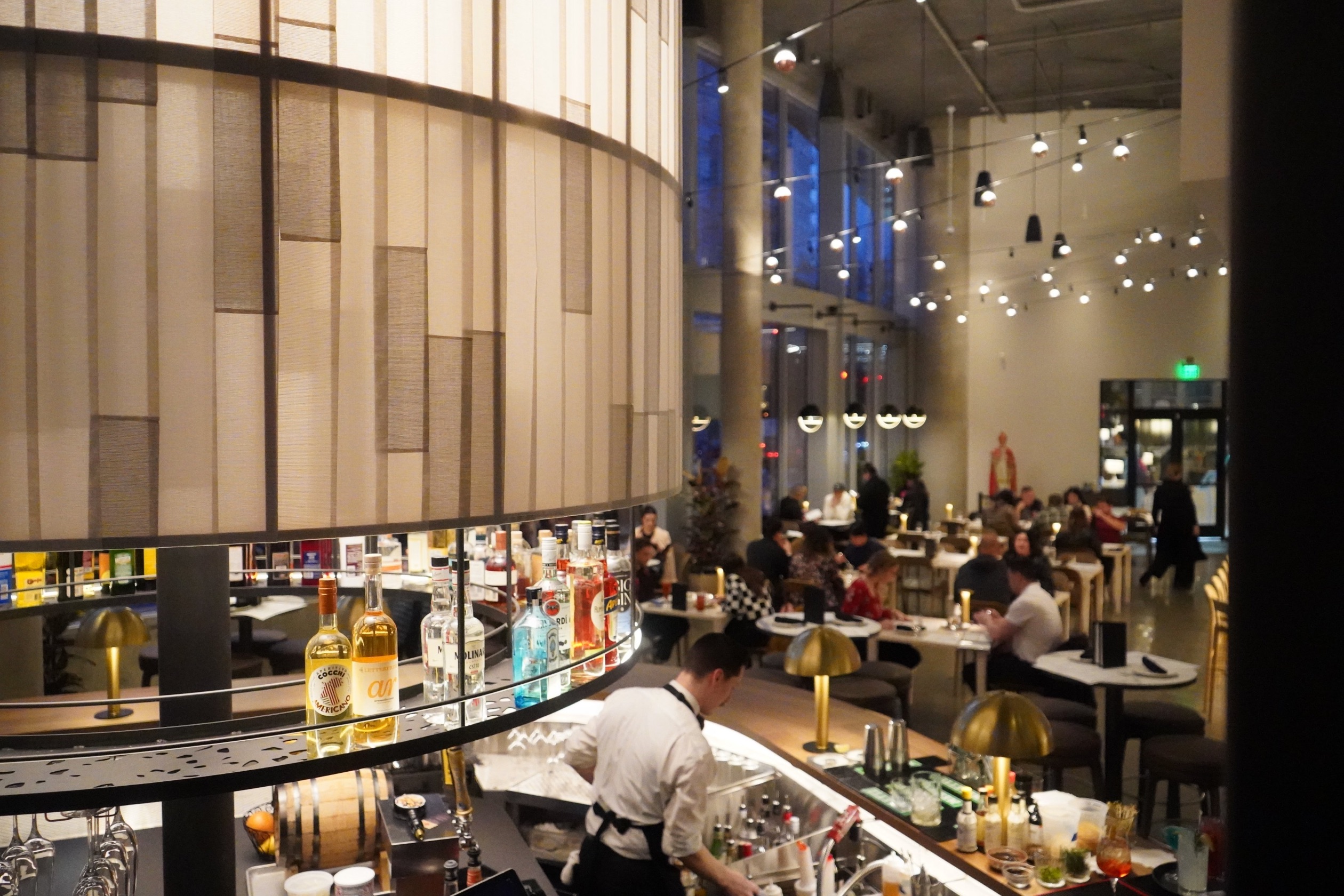Pioneer Square is the heart of Seattle. Settled in 1852 by men and women who were drawn to its protected deep-water harbor, the area burned to the ground in 1889 when a fast-moving blaze consumed 29 blocks of mostly wooden structures.
Quickly rebuilt, this time using brick and stone, Pioneer Square today offers some fine examples of 19th-century Romanesque architecture. The neighborhood is home to quirky boutiques and a men’s shelter, art galleries and historic saloons. Now, one business owner hopes to create more buzz by establishing a Little Italy there.
The idea is being championed by long-time restaurateur Luigi DeNunzio, a native of Puglia, who owns three restaurants in Pioneer Square. His flagship restaurant, Al Boccalino, opened in 1989 in an historic red-brick building that originally housed the Bedford Hotel.
For many business owners, a fresh approach to marketing is sorely needed these days in Pioneer Square. The neighborhood has several major construction projects underway, including a waterfront seawall restoration and a massive highway tunnel project, that are playing havoc with parking and ambience.
By DeNunzio’s count, there are 11 Italian food-related businesses nearby, which he believes is the densest concentration of Italian restaurants in the city. As a savvy business owner proud of his Italian heritage, he hopes to encourage the other Italian restaurateurs to join him in creating and marketing a Little Italy.
“If we work together, we have more power,” said DeNunzio. “When a new Italian wine comes on the market, we can all feature it. When the holidays arrive, we can all offer a traditional menu, focusing on our own regional specialties.”
DeNunzio is a fixture in Pioneer Square, acknowledged Karen True, director of business development at the Alliance for Pioneer Square, a nonprofit organization that promotes the neighborhood’s businesses and public spaces. “Luigi believed in this neighborhood years ago when others were moving out,” said True. “But we have 99 restaurants and cafes in Pioneer Square. All our chefs and restaurant owners, Italian or not, are proud and passionate about what they do. Pioneer Square is known for its diversity. That’s what we’re most proud of.”
Undeterred, DeNunzio continues to create his own version of Little Italy. He offers a Little Italy food tour as well as cooking classes, and launched a website called SeattlesLittle Italy.com. In partnership with other Italian restaurants, he would like to start a series of sagre, or local festivals, where a particular food, such as cheese or mushrooms, is featured, allowing people to taste the product and learn more about it.
More Italian events would bring more visitors to Pioneer Square, agreed Emanuele Bizzarri, who owns nearby Caffe Umbria, but Bizzarri is uncertain whether the momentum could be sustained. Instead he would prefer a once-yearly festival.
“We could hold it on August 15, which is Ferragosto in Italy and marks the beginning of the summer holiday period,” said Bizzarri. “Or we could hold it on October 4, the feast day of St. Francis. The challenge, of course, is getting everyone to agree and get involved and then getting someone to organize it.”
Caffe Umbria fronts on a pleasant, brick-paved pedestrian mall with stylish new restaurants and art galleries nearby. The location would be an ideal spot for food vendors, music stages and other entertainment, according to Bizzarri. “We could close off the cross streets and make it interesting,” he said.
If it gets off the ground, a Little Italy festival in Pioneer Square would be the city’s third Italian festival, each held in a different quadrant of the city. In south Seattle, there is a San Gennaro festival, now in its third year. Festa Italiana, the “granddaddy” of the local Italian celebrations, is held at Seattle Center the last weekend of September. Now in its 28th year, Festa Italiana attracts some 30,000 visitors, with multiple venues offering Italian food, music, bocce, grape stomping, wine tasting and more.
DeNunzio began his Little Italy campaign in earnest about six years ago. In 2009, he persuaded then-mayor Greg Nickels to recognize 1 Yesler Way—a block consisting of a single building where Al Boccalino is located—as representative of the area’s “rich diversity of cultures” and the importance of retaining one’s heritage. The signed document is framed and displayed in Al Boccalino’s dining room.
In reality, Pioneer Square never saw a great concentration of Italian immigrants. Most of the early Italian settlers lived southeast of the city in neighborhoods known as Rainier Valley and Georgetown. These less-urban spots appealed to immigrant families who could enjoy the benefits of both city and country life. There was room to start a kitchen garden and raise chickens, yet the men were still close enough to commute to construction or mill jobs.
DeNunzio admits that Pioneer Square may not have deep Italian roots but he is reluctant to give up his dream. “Little Italy’s everywhere are dying,” he said. “The older generation is gone. We must reinvent ourselves if we want to survive. Seattle’s Pioneer Square may not be where a lot of Italians immigrants settled, but we can still offer culture, good food and friendship. That will be our future.”































